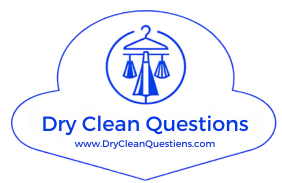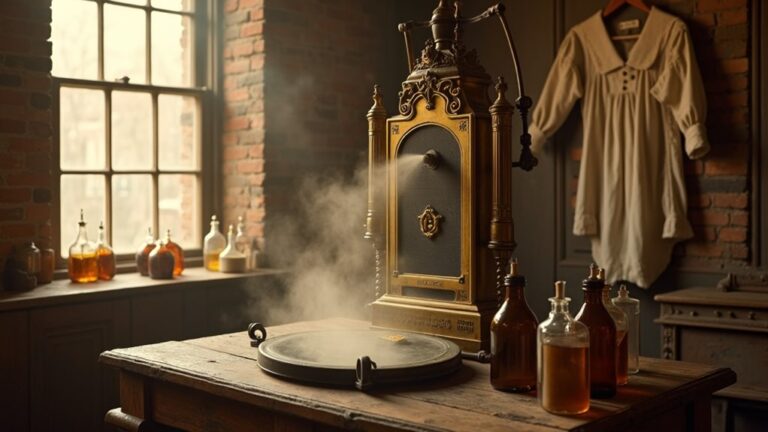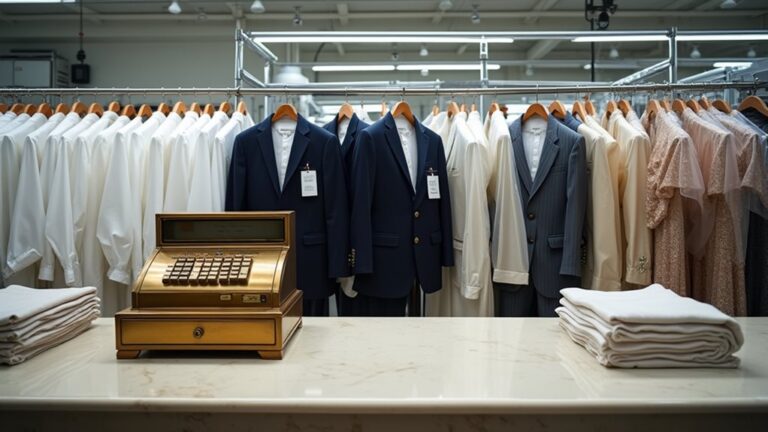Dry cleaning began in ancient Rome around 79 AD, where clever merchants in Pompeii discovered they could clean delicate fabrics using absorbent clay and chemical powders instead of water—a brilliant solution you’d probably appreciate when dealing with your favorite silk blouse today. The Greeks and Romans perfected these early methods with powdered chemicals and lye, creating the foundation for modern garment care that would eventually revolutionize how we maintain our most precious clothing pieces.
Ancient Origins and Early Methods
While most people assume dry cleaning is a modern invention, you’d be surprised to learn that our ancestors were tackling stubborn stains thousands of years ago, long before anyone dreamed of drive-through cleaners or same-day service.
The ancient origins of dry cleaning trace back to Rome, where clever folks discovered that absorbent clay could work magic on dirty garments, creating effective waterless cleaning methods that’d make today’s eco-warriors proud 😊.
When archaeologists explored Pompeii’s ruins, they actually found professional dry cleaning shops from 79 AD, proving that garment care was serious business even then.
Greeks and Romans perfected these techniques using powdered chemicals and lye to banish stains, while French innovators later introduced turpentine-based solvents in the 1700s, setting the stage for Jean Baptiste Jolly’s accidental kerosene discovery.
The Accidental Discovery That Changed Everything

Sometimes the most revolutionary discoveries happen when you’re just trying to clean up a mess, and that’s exactly what occurred in 1821 when Thomas L. Jennings patented his groundbreaking dry scouring method.
You’d think someone would’ve planned such an important cleaning technique, but nope – it was Jean Baptiste Jolly’s accidental kerosene spill on a stained tablecloth that really sparked the modern dry cleaning revolution.
Envision this: one clumsy moment transforms garment care forever! Jolly smartly capitalized on his discovery, opening Teinturerie Jolly Belin in Paris by 1845, establishing the first commercial dry cleaning service.
From accidental spill to entrepreneurial triumph – Jolly turned his happy accident into Paris’s pioneering dry cleaning empire in just over two decades.
However, using flammable solvents like kerosene created serious safety concerns (imagine the insurance claims! 😅), which eventually pushed innovators toward developing less hazardous solvents in the following century.
This revolutionary cleaning method proved especially valuable for maintaining delicate materials like wool and silk that would be damaged by traditional water washing.
From Kerosene to Modern Solvents
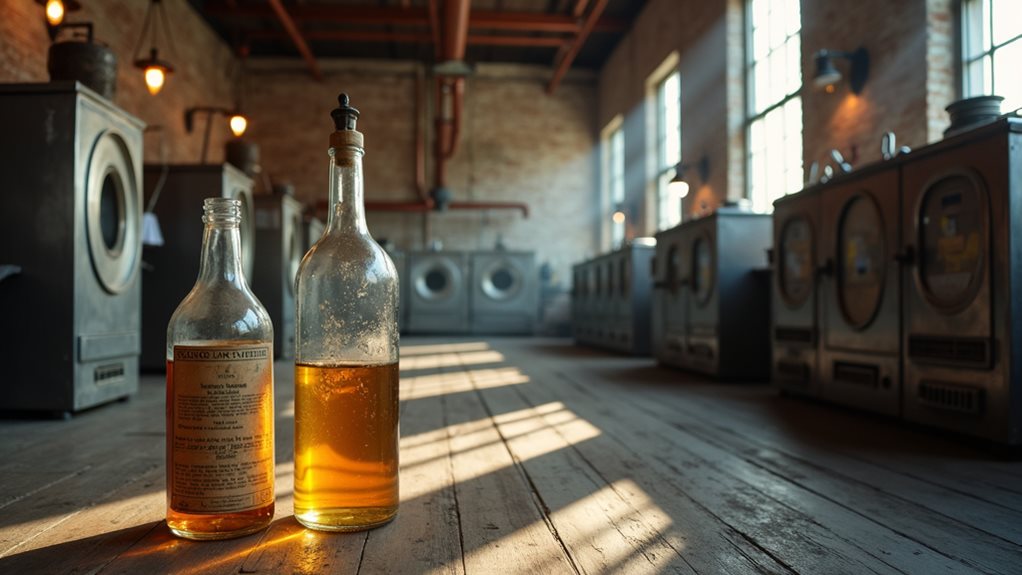
Though kerosene launched the dry cleaning revolution, you can imagine how nervous business owners became when they realized they were basically running fire hazards disguised as laundries.
The early 1900s brought much-needed relief when chlorinated solvents entered the scene, offering safer alternatives without sacrificing cleaning power.
By the 1930s, perchloroethylene became the industry standard, delivering exceptional results while reducing fire risks.
However, environmental concerns eventually sparked another evolution:
- Hydrocarbon solvents emerged as gentler alternatives that won’t make you worry about toxic exposure
- Supercritical CO2 cleaning revolutionized the industry with completely non-toxic methods
- Solvent recovery systems now capture and reuse chemicals, protecting both your health and the planet
This chlorinated hydrocarbon effectively dissolves oils, greases, and stains that water-based cleaning cannot remove, though environmental concerns have driven many cleaners to seek greener alternatives.
Today’s modern solvents prioritize safe cleaning methods, proving that effective dry cleaning doesn’t require dangerous compromises.
The Rise of Perchloroethylene in the 1930s
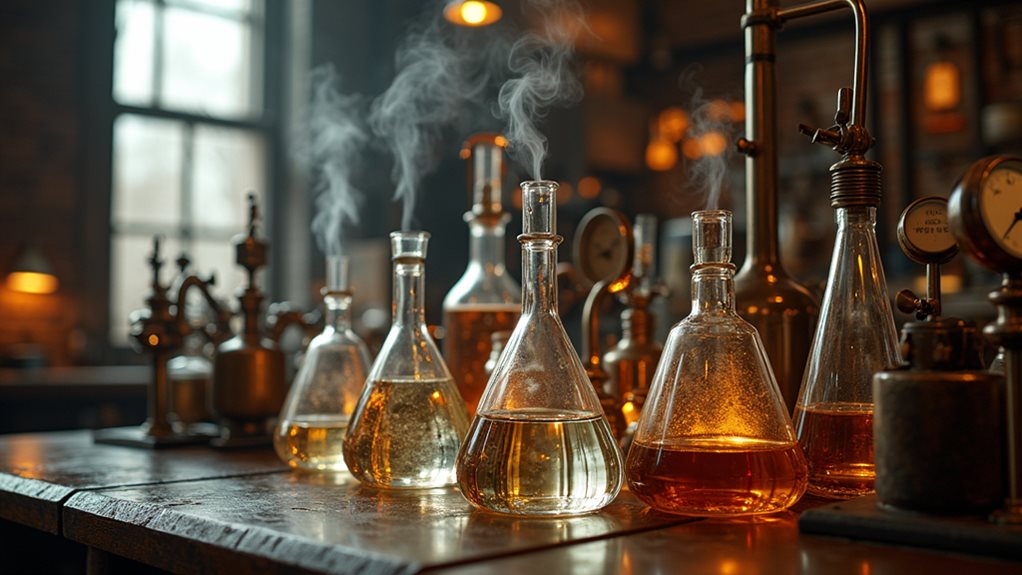
When perchloroethylene burst onto the dry cleaning scene in the 1930s, it felt like discovering fire all over again—except this time, you didn’t have to worry about your business literally going up in flames.
Unlike the flammable solvents like kerosene that dominated the dry cleaning industry before, this nonflammable wonder eliminated those terrifying fire hazards that kept business owners awake at night. The cleaning power was phenomenal, and suddenly you could move your shop back into busy urban areas without insurance companies having panic attacks.
This chlorinated hydrocarbon proved especially effective at dissolving oils, grease, and stubborn stains that water-based cleaning simply couldn’t tackle, making it perfect for delicate fabrics like silk and wool.
Environmental Awareness and Green Alternatives
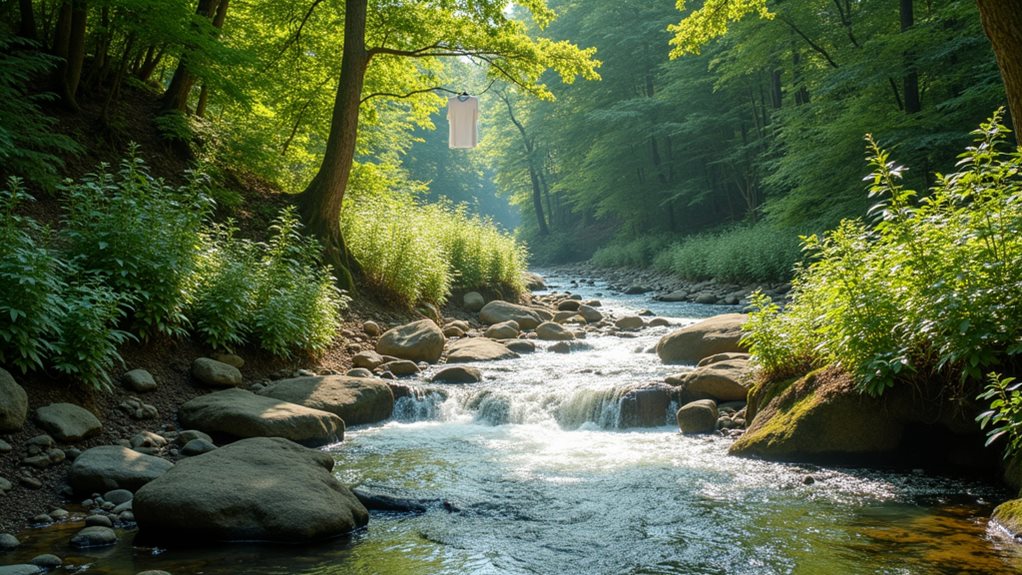
As environmental awareness swept through society like a wake-up call nobody could ignore, the dry cleaning industry found itself squarely in the crosshairs of change, facing mounting pressure to abandon its chemical-heavy past for something greener and safer.
You’ve probably noticed how your local cleaner now proudly displays “eco-friendly practices” signs, and there’s good reason for that shift. The once-dominant perchloroethylene dropped from 80% usage to around 60-65%, replaced by hydrocarbon solvents and innovative non-toxic alternatives like supercritical CO2.
Here’s what’s driving this transformation:
- Regulatory frameworks forcing change (California’s banning PCE entirely by 2023! 😮)
- Consumer demand for sustainable cleaning options you can feel good about
- Health concerns making green alternatives not only trendy, but necessary
Modern consumers can now choose from safer alternatives including wet cleaning, CO2 cleaning, and biodegradable solvents that certified green cleaners offer as environmentally responsible options.
Today’s Dry Cleaning Industry
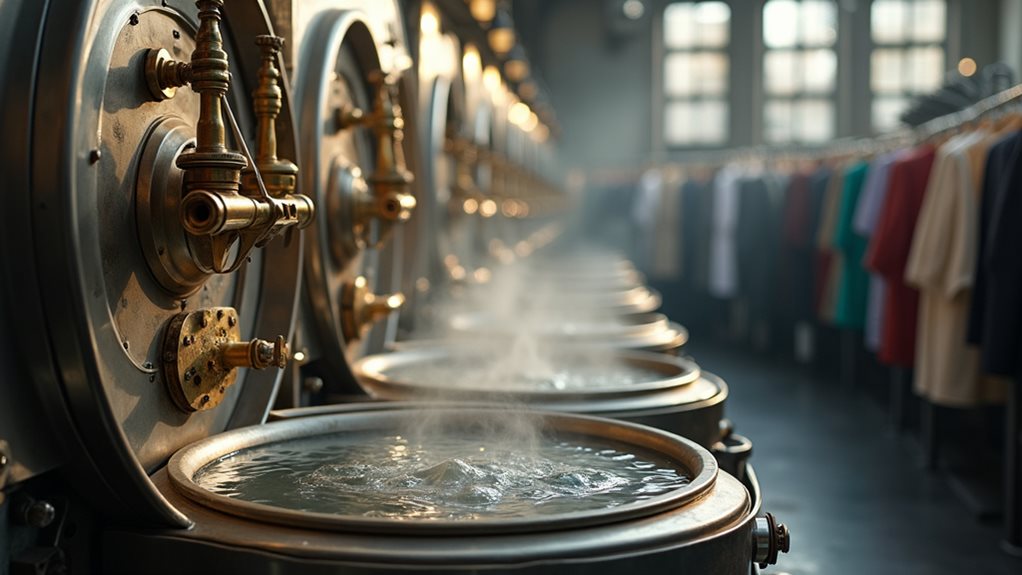
Walking into a modern dry cleaner today, you’d be amazed at how dramatically this $8 billion industry has transformed itself from the chemical-laden operations of decades past into sleek, tech-savvy businesses that actually care about your health and the planet.
With over 31,000 dry cleaning businesses now serving residential sectors nationwide, you’ll find modern machines using alternative solvents that deliver the same spotless results without harsh chemicals.
Today’s 31,000+ dry cleaners nationwide use advanced alternative solvents that achieve spotless results without relying on harsh chemicals.
These eco-friendly practices aren’t just trendy marketing—they’re genuine responses to environmental concerns, especially with California banning perchloroethylene by 2023.
While perc remains an effective cleaning solvent, technological advancements are proving that safer options work just as well.
Many facilities now offer steam cleaning services that use high-temperature water vapor to remove dirt and odors without any chemicals at all.
Today’s dry cleaning services even offer convenient pickup and delivery, making quality garment care surprisingly accessible.
